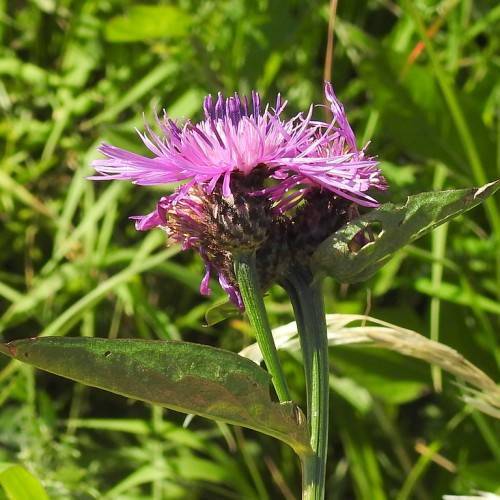
Short-Fringe Starthistle
Centaurea nigrescens
Also Known As - Tyrol KnapweedWatering:
Average
Hardiness Zone:
Sun:
full sun
Fruits:
Fruits Ready In
Leaf:
Yes
Growth Rate:
Low
Drought Tolerant:
Yes
Salt Tolerant:
Yes
Thorny:
Yes
Invasive:
Yes
Care Level:
Medium
watering
Short-fringe Starthistle should be watered frequently in order to keep the soil lightly moist to the touch. It is important to not overwater the plant as too much water can lead to root rot. Generally, water the plant once or twice a week depending on the temperature and climate, ensuring that the soil has time to dry out before the next watering. During the summer, it may be necessary to water more frequently—as often as 3-4 times a week. During the winter, the watering cycle can be reduced as the plant is typically dormant during this time.
sunlight
Short-Fringe Starthistle (Centaurea nigrescens) requires full sun to partial shade daily. This plant species does best in an area with at least 6 hours of sunlight per day. Depending on the season, the ideal amount of sunlight for this plant species should be adjusted to account for the amount of available sunlight and the intensity of the sunlight. In the summer, when the sun is especially strong, some shade may be beneficial. During winter months, when the days are shorter, additional light may be needed. It is important to note that too much direct sunlight can cause the foliage to become scorched.
pruning
Short-Fringe Starthistle (Centaurea nigrescens) should be pruned in late February or early March before new growth appears. For best results, prune the plant by removing dead or damaged stems and seed heads as soon as they are noticed. This will help reduce the spread of the plant. Pruning of new growth should be done only if the plant is getting too large and is crowding other plants. When pruning for this purpose, remove only a few stems all the way back to the crown, which should be left intact for new growth. It is important to prune in such a way that the plant will maintain its natural shape without developing bare spots.
